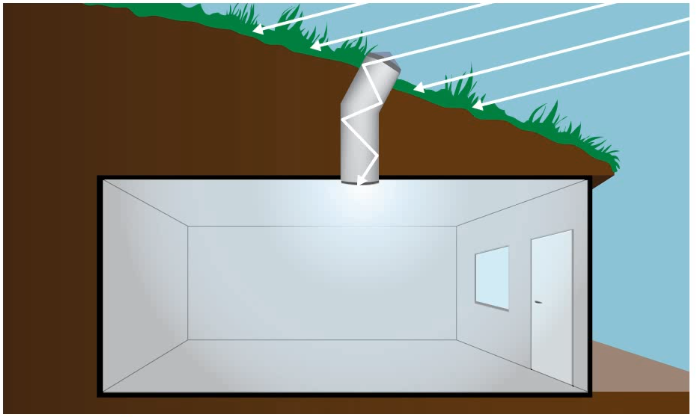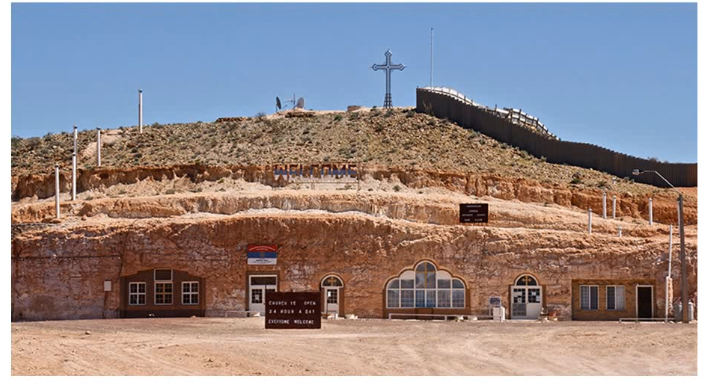IB myp 4-5 physics – Practice Questions- All Topics
Topic :Forces and energy-Energy Sources and resources ,fuels and environmental impact
Topic :Forces and energy– Weightage : 21 %
All Questions for Topic :Renewable & non-renewable energy sources,The industrial revolution, fossil fuel burning, climate change
Question (13 marks)
Humans need shelter every night and that means they have been looking for a temperate place to live for centuries.
Hundreds of years ago, one method of keeping houses warm in winter was to build part of the construction underground or to dig inside mountains. Iceland, Italy, Canada and the United States have examples of these constructions which are, in general, named dugouts.


Question a (4 mark)
Suggest two advantages and two disadvantages of using solar tubes in dugout houses.
Advantage 1:
Advantage 2:
Disadvantage 1:
Disadvantage 2:
▶️Answer/Explanation
Ans:
Advantage 1: Increased Natural Lighting – Solar tubes provide a source of natural sunlight, which helps to alleviate the lack of natural light in dugout houses. This can create a brighter and more inviting living environment, reducing the need for artificial lighting during the day.
Advantage 2: Energy Efficiency – By harnessing natural sunlight, solar tubes can reduce the dependency on artificial lighting, resulting in energy savings. This can lead to lower electricity consumption and reduced utility costs, making solar tubes a sustainable and cost-effective lighting solution.
Disadvantage 1: Limited Placement Options – Solar tubes require direct access to sunlight for optimal performance. Depending on the location and orientation of the dugout house, it may be challenging to find suitable positions for the solar tubes that receive sufficient sunlight. This limitation could restrict the effectiveness of the solar tube system.
Disadvantage 2: Dependency on Weather Conditions – Solar tubes rely on sunlight to transmit light into the house. Cloudy or overcast weather conditions can significantly reduce the amount of light transmitted, potentially diminishing the effectiveness of the solar tube system. In regions with frequent cloudy days or limited sunlight, the reliability of solar tubes as a light source may be compromised.
Dugout houses and other buildings need to be built inside a large mass of rock or soil that acts as a thermal insulator. The rock or soil absorbs or retains heat as it needs a large quantity of energy to raise or lower its temperature. The temperature of dugout buildings remains constant throughout the year. In cool countries, the temperature inside the building will stay warm and in warmer countries the house will be cool.
In Coober Pedy, a town in Australia, the temperature changes between $0^{\circ} \mathrm{C}$ at night to over $50^{\circ} \mathrm{C}$ during the day.

Question b (9 mark)
Nowadays extreme temperatures in some cities means that large quantities of energy are used in air conditioners or heaters to keep people at comfortable temperatures.
One way we could reduce the use of energy in cities is to build accommodation underground.
Discuss if underground housing could be used for inner city housing. In your answer, you should consider:
- advantages
- disadvantages
- environmental considerations
- social considerations.
▶️Answer/Explanation
Ans:
Underground housing could be considered for inner city housing, and the advantages, disadvantages, environmental considerations, and social considerations are as follows:
Advantages:
1. Thermal Efficiency: Underground housing benefits from the thermal insulation provided by the surrounding soil or rock, leading to more stable temperatures throughout the year. This can reduce the need for excessive heating or cooling, resulting in energy savings and lower utility costs.
2. Noise Reduction: Being shielded by the earth, underground housing can offer a quieter and more peaceful living environment by minimizing the impact of outside noise, such as traffic or urban activities.
3. Space Optimization: Building underground can maximize land use in densely populated cities where available space is limited. It allows for multi-level constructions, potentially increasing the housing capacity and addressing urban housing demands.
Disadvantages:
1. Limited Natural Light: Underground housing generally lacks direct access to natural light, which can result in a darker living environment. Artificial lighting systems would be required to compensate for this, potentially increasing energy consumption.
2. Ventilation and Air Quality: Proper ventilation becomes crucial in underground housing to ensure fresh air circulation and maintain a healthy indoor environment. Without adequate ventilation systems, there can be challenges in preventing the buildup of humidity, odors, and pollutants.
Environmental Considerations:
1. Energy Efficiency: Underground housing, with its natural thermal insulation, can reduce the reliance on heating and cooling systems, leading to energy savings and a smaller carbon footprint.
2. Land Conservation: Building underground helps conserve land resources by utilizing the space beneath the surface rather than encroaching on green areas or expanding urban sprawl.
Social Considerations:
1. Psychological Impact: The absence of natural light and limited views of the surrounding environment in underground housing may have psychological effects on some individuals. It is important to consider the potential impact on mental well-being and the need for design solutions that provide a sense of connection to the outdoors.
2. Community Integration: Underground housing should be designed in a way that fosters community interaction and avoids isolation. Incorporating communal spaces, outdoor gathering areas, and promoting social integration can help address social considerations.
Overall, while underground housing offers advantages such as thermal efficiency and space optimization, it also presents challenges related to lighting, ventilation, and social aspects. It is important to carefully address these concerns through innovative design, effective engineering, and consideration of the environmental and social impacts to determine the suitability of underground housing for inner city living.
Question:
The world’s energy production is about 5.5 × 1020J per year. Express this value in watts.
▶️Answer/Explanation
Ans: \(\frac{5.5\times 10^{20}}{365.25\times 24\times 3600}=1.74\times 10^{13}W\)